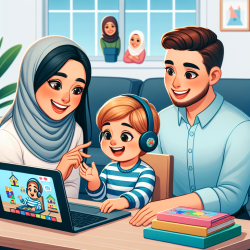Unlocking Potential: Phonological Remediation for Twice-Exceptional Children
In the realm of speech-language pathology, understanding the unique needs of twice-exceptional children—those who are gifted yet face developmental challenges like dyslexia—is crucial. A recent study, "Phonological remediation effects on a child with giftedness and developmental dyslexia," sheds light on how targeted interventions can significantly enhance learning outcomes for these children.
Understanding Twice-Exceptionality
Twice-exceptionality refers to individuals who exhibit high performance in certain areas while also experiencing difficulties due to conditions like dyslexia. This duality often leads to unique educational challenges and opportunities. The study focuses on a 9-year-old child who, despite her giftedness, struggled with reading and writing due to dyslexia. Her journey through phonological remediation offers valuable insights for practitioners.
The Power of Phonological Remediation
The study highlights the impact of a structured phonological remediation program, which included activities designed to improve phonological skills such as:
- Identification of graphemes and phonemes
- Phonemic and syllabic manipulation
- Lexical access and working memory exercises
These interventions were conducted over 20 sessions, each lasting 60 minutes. The results were remarkable, showing improvements in phonological processing, reading speed, and comprehension.
Data-Driven Outcomes
Before the intervention, the child demonstrated an alphabetic level in reading and struggled with phonological processing. Post-intervention, she advanced to an orthographic reading level, reading 94.4 words per minute—an impressive leap from her initial 20 words per minute. This progress underscores the potential of phonological remediation to transform educational outcomes for twice-exceptional children.
Implications for Practitioners
For practitioners, this study emphasizes the importance of tailored interventions that address both the strengths and challenges of twice-exceptional children. By focusing on phonological skills, therapists can help these children unlock their full potential, enhancing their academic performance and self-confidence.
Moreover, the study encourages further research into specialized interventions for twice-exceptional children, advocating for a nuanced approach that considers the diverse needs of this population.
Conclusion
The journey of the child in this study serves as a testament to the transformative power of phonological remediation. By leveraging data-driven strategies, practitioners can create meaningful changes in the lives of twice-exceptional children, helping them to thrive academically and personally.
To read the original research paper, please follow this link: Phonological remediation effects on a child with giftedness and developmental dyslexia.










